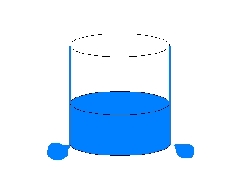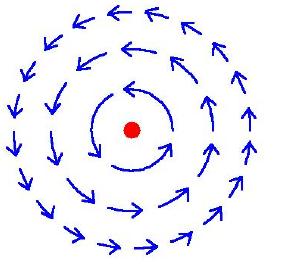Superfluid Helium Background
At temperatures near absolute zero, liquid helium becomes a superfluid. Just as electrons
can flow without resistance in a superconductor, atoms can move without viscosity in a
superfluid. Superfluidity is a quantum mechanical phenomenon, with a volume of liquid "acting
like" a particle and described by a single-particle Schrodinger equation. Since the spatial
extent of the superfluid can be large (our experiments use a volume several centimeters long),
we have the chance to see various counterintuitive quantum mechanical effects on a macroscopic
scale.
Two of the most unusual effects, apart from zero-viscosity flow, are film flow and quantized
vortices. A superfluid in a beaker will form a film that crawls up the walls, over the top,
and down the sides until the beaker is emptied. Normal fluids can also be siphoned out of
containers, but only if their motion is started externally!
Now imagine that a (tightly sealed!) bucket of superfluid rotates. A vortex can form in the
middle, with fluid moving around in a circle, much like a water vortex in a draining bathtub.
The amazing difference is that, at a given distance from the vortex center, only certain fluid
velocities are allowed! There is a minimum velocity, then twice that minimum, then three
times the minimum, etc. No in-between values can occur, so the vortices are said to be
quantized.
My own research is on the behavior of superfluid vortices.
For further introduction to superfluids, I recommend D.R. Tilley and J. Tilley, "Superfluidity
and Superconductivity," (IOP Publishing Ltd., Bristol, 1990). Much of the book is accessible to
an advanced undergraduate physics major.


